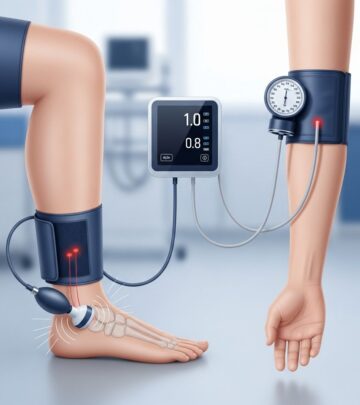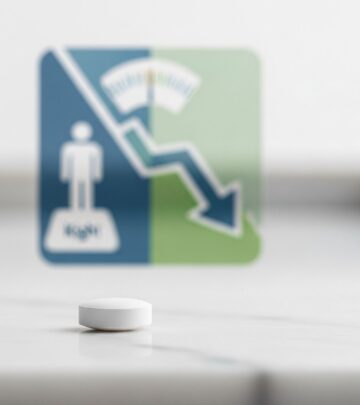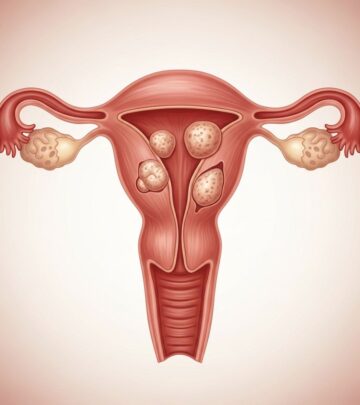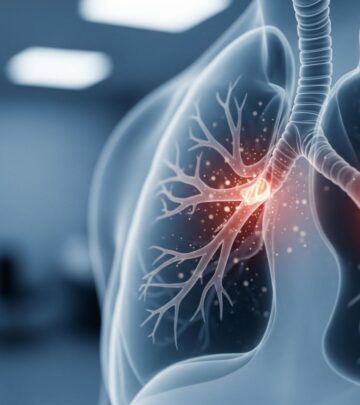HIV/AIDS: Understanding Symptoms, Causes, and Prevention
Comprehensive guide to HIV/AIDS: symptoms, causes, risk factors, complications, prevention, and treatment options for improved health and awareness.

Human immunodeficiency virus (HIV) and acquired immunodeficiency syndrome (AIDS) remain major global health challenges. With improved knowledge and treatment options, people can now manage HIV as a chronic illness and significantly reduce the risk of severe complications. This article explores what HIV/AIDS is, its symptoms, how it spreads, risk factors, complications, prevention, and treatment options.
What is HIV/AIDS?
HIV (human immunodeficiency virus) is a virus that targets and damages the immune system, specifically attacking vital immune cells called CD4 T lymphocytes. Without treatment, HIV gradually destroys the ability of the body to fight infections and diseases. AIDS (acquired immunodeficiency syndrome) is the most advanced stage of HIV infection, where the immune system is severely weakened and vulnerable to opportunistic infections.
HIV is a chronic, lifelong condition. There is currently no cure, but there are effective treatments to control the virus, maintain health, and prevent transmission to others.
Symptoms
The signs and symptoms of HIV infection vary depending on the phase of the infection:
Early Acute HIV Infection
Some people develop symptoms two to four weeks after infection, often resembling a severe flu or other viral illness. This is known as acute HIV infection. Common symptoms include:
- Fever
- Headache
- Muscle aches and joint pain
- Rash
- Sore throat
- Swollen lymph nodes, especially in the neck
- Fatigue
- Mouth ulcers
- Night sweats
These early symptoms often resolve within weeks, and many people may not experience noticeable symptoms at this stage.
Clinical Latency (Chronic HIV)
After the initial acute illness, HIV enters a clinically latent stage. During this period:
- People may have no symptoms or only mild ones that can last for years.
- The virus continues to multiply at low levels.
- If untreated, this stage can progress to AIDS over about 10 years.
Progression to AIDS
If HIV is not treated, the infection may advance to AIDS. Symptoms of AIDS can include:
- Rapid, unexplained weight loss
- Chronic diarrhea
- Persistent cough or shortness of breath
- Recurring fever, chills, or night sweats
- Profound, unexplained fatigue
- Persistent swollen lymph nodes
- White spots or unusual lesions on the tongue or in the mouth
- Neurological symptoms (memory loss, depression, difficulty walking)
Without effective treatment, AIDS can be fatal due to severe opportunistic infections and cancers.
Causes
HIV is caused by infection with the human immunodeficiency virus. The virus is found in certain body fluids, including blood, semen, vaginal fluids, rectal fluids, and breast milk. HIV infects and destroys CD4 T cells, gradually weakening the immune system.
How HIV Spreads
HIV is transmitted when infected fluids enter the body of an uninfected person. Common routes of transmission include:
- Unprotected sex: Vaginal, anal, or oral sex with an infected person.
- Sharing needles or syringes: Especially among people who inject drugs.
- Mother to child transmission: During pregnancy, childbirth, or breastfeeding.
- Blood transfusions: Rare in countries with screening procedures, but possible where blood is not routinely tested.
- Occupational exposure: Health care workers exposed to infected body fluids.
HIV is not spread through casual contact, such as hugging, shaking hands, or sharing dishes. It cannot be transmitted by air, water, or insects.
Risk Factors
Certain behaviors and conditions increase the risk of acquiring HIV:
- Having unprotected sex, especially with multiple partners
- Men who have sex with men
- Having another sexually transmitted infection (STI)
- Sharing contaminated needles or syringes
- Receiving contaminated blood products or organ transplants
- Living in regions with high rates of HIV infection
Mother-to-Child Transmission
Without treatment, mothers with HIV can transmit the virus to their babies during pregnancy, childbirth, or breastfeeding. Effective antiretroviral therapy (ART) during pregnancy can significantly reduce this risk.
Complications
HIV weakens the immune system, increasing susceptibility to infections and certain cancers. Complications can include:
- Opportunistic infections: These infections take advantage of a weakened immune system. Examples include tuberculosis, pneumonia, cytomegalovirus, and fungal infections.
- Certain cancers: People with untreated HIV/AIDS have a higher risk for Kaposi’s sarcoma, lymphoma, and invasive cervical cancer.
- Neurological complications: HIV can damage the nervous system, leading to confusion, memory loss, depression, anxiety, and problems with movement.
- Other complications: Kidney disease, liver disease (often worsened by hepatitis B or C), and cardiovascular disease.
Prevention
There are effective ways to prevent the spread of HIV. Key strategies include:
- Practice safe sex: Use condoms consistently and correctly. Reducing the number of sexual partners lowers risk.
- Don’t share needles or syringes: Use only sterile equipment for injections.
- Get tested and know your partner’s status: Regular HIV testing and disclosure between partners is crucial.
- Consider pre-exposure prophylaxis (PrEP): PrEP is a daily medication for people at high risk that significantly reduces the chance of acquiring HIV.
- Treatment as prevention (TasP): People living with HIV who take ART and achieve and maintain an undetectable viral load cannot transmit the virus to others through sex.
- Screen blood products: In countries with appropriate resources, all blood donations are screened for HIV.
Diagnosis
HIV is diagnosed using specific blood or saliva tests that detect the presence of HIV antibodies or the virus itself. The process may include:
- Antibody screening tests: Detect HIV antibodies, usually within weeks of exposure.
- Combination/antigen-antibody tests: More sensitive; can detect HIV earlier.
- Nucleic acid tests (NAT): Detect the virus directly, used in special circumstances.
Early diagnosis allows for timely treatment, better health outcomes, and lowered transmission risk.
Treatment
The standard treatment for HIV infection is called antiretroviral therapy (ART):
- ART involves combinations of medicines that reduce the viral load in the body.
- Treatment can suppress HIV to undetectable levels, allowing a person to live a long and healthy life.
- ART must be taken exactly as prescribed, usually once daily for life.
- Effective treatment prevents the progression of HIV to AIDS.
People receiving ART require regular medical follow-up, monitoring for side effects, and adherence support.
Managing HIV/AIDS
- Regular monitoring of viral load and CD4 cell count
- Routine health maintenance, including vaccinations and screenings for other infections
- Management of complications or coexisting conditions, such as hepatitis, kidney or heart disease
- Counseling and support for mental health and stigma issues
Living With HIV
With today’s treatments, HIV can be managed as a chronic disease. Many people with HIV live as long as those without the virus. Effective therapies have also reduced the risk of transmitting HIV to sexual partners to virtually zero when the viral load is undetectable.
Living with HIV includes:
- Adherence to the prescribed medication regimen
- Access to holistic medical care
- Psychological support and social services
- Healthy lifestyle choices, including nutrition, exercise, and avoiding substances that can harm the immune system
Research and Future Directions
Research continues in the areas of vaccine development, HIV cure strategies, simplified treatment regimens, and approaches to further reduce transmission. Participation in clinical trials contributes to scientific progress and may give access to tomorrow’s therapies today.
Frequently Asked Questions (FAQs)
Q: Can HIV be cured?
A: There is currently no cure for HIV. However, lifelong antiretroviral therapy can control the virus, allow people to live healthy lives, and prevent transmission to others.
Q: What is the difference between HIV and AIDS?
A: HIV is the virus that weakens the immune system, while AIDS is the term for the most advanced stage of HIV infection, characterized by severe immune deficiency and opportunistic infections.
Q: How soon after exposure can HIV be detected?
A: Most tests can detect HIV within 2 to 6 weeks after exposure, but some tests identify the virus sooner. Repeat testing may be required in some situations.
Q: Is it safe to be around someone with HIV?
A: Yes. HIV is not spread by casual contact such as hugging, sharing food, or through air, water, or insects.
Q: How can HIV infection be prevented?
A: Ways to prevent HIV include using condoms, taking PrEP if at risk, not sharing needles, and getting regular testing.
Q: What should I do if I think I have been exposed to HIV?
A: Seek prompt medical care. Post-exposure prophylaxis (PEP) may prevent infection if taken within 72 hours of exposure.
Key Takeaways
- HIV attacks and weakens the immune system, and if left untreated, can lead to AIDS.
- Common symptoms may appear within weeks of infection, but many people have no symptoms for years.
- Effective antiretroviral therapy allows people with HIV to live long and healthy lives and prevents transmission.
- Prevention strategies and regular testing are crucial to control the spread of HIV.
- Ongoing research promises future advances in treatment and possible cure.
When to See a Doctor
Seek medical attention if you suspect exposure to HIV or experience flu-like symptoms after potential risk. Early diagnosis and treatment greatly improve long-term health outcomes.
Read full bio of medha deb












